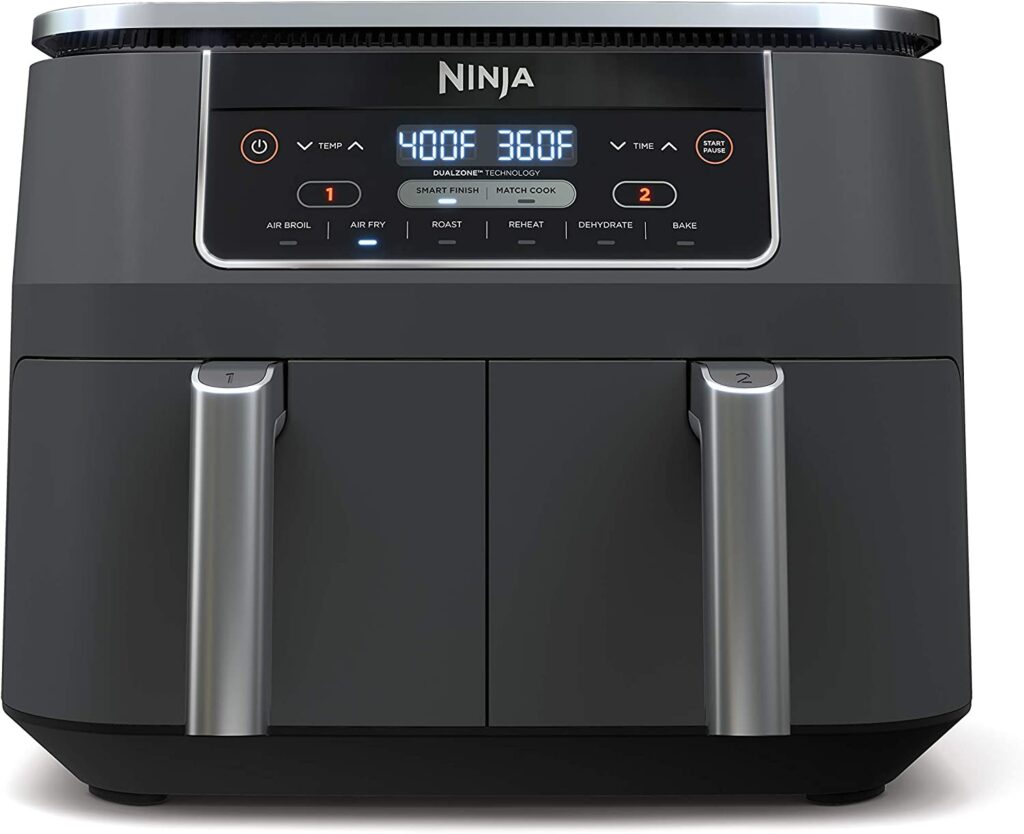Garbanzo Beans Air Fryer Recipe: A Delicious And Healthy Snack Option
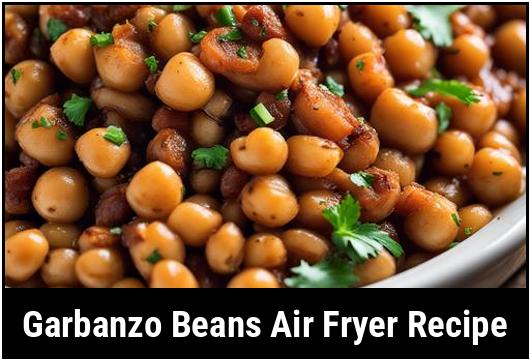
Quick and easy, yet incredibly flavorful and nutritious, garbanzo beans are a versatile legume that can be transformed into a delicious snack when cooked in an air fryer.
Garbanzo beans, also known as chickpeas, have been a staple in Mediterranean, Middle Eastern, and Indian cuisines for centuries. Packed with protein, fiber, vitamins, and minerals, chickpeas offer a range of health benefits. In this comprehensive guide, we will explore in great detail the food science behind air frying garbanzo beans, culinary details, selection, cleaning, preparation, helpful tips, variations, doneness checks, and of course, a mouth-watering recipe.
The Science of Air Frying Garbanzo Beans
Air frying is a popular cooking method that uses hot air circulation to cook food, giving it a crispy texture without the need for excessive oil. When it comes to garbanzo beans, air frying offers a healthier alternative to deep frying, as it significantly reduces the amount of oil used while maintaining the desired crunchiness.
Selection and Cleaning
Before you embark on your garbanzo beans air frying journey, it is essential to select high-quality beans for the best results. Look for dried garbanzo beans in your local grocery store or market. Opting for organic beans can ensure they are free from pesticides and other chemicals.
Once you have acquired your garbanzo beans, rinse them thoroughly under cold water to remove any dirt or impurities. Soaking the beans overnight is highly recommended, as it helps to soften them and reduces the cooking time. After soaking, drain the beans and pat them dry using a clean kitchen towel or paper towels.
Preparation
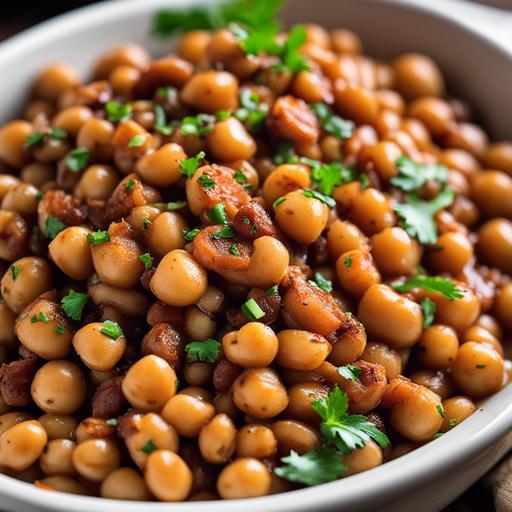
To achieve maximum crispiness and optimal air frying results, it is crucial to dry the garbanzo beans thoroughly after soaking. Excess moisture can hinder the air frying process, resulting in less crunchy beans. Spread the drained and dried beans on a baking sheet and let them air dry for at least 30 minutes. Alternatively, you can use a kitchen towel to gently pat them dry.
Helpful Tips for Perfectly Air Fried Garbanzo Beans
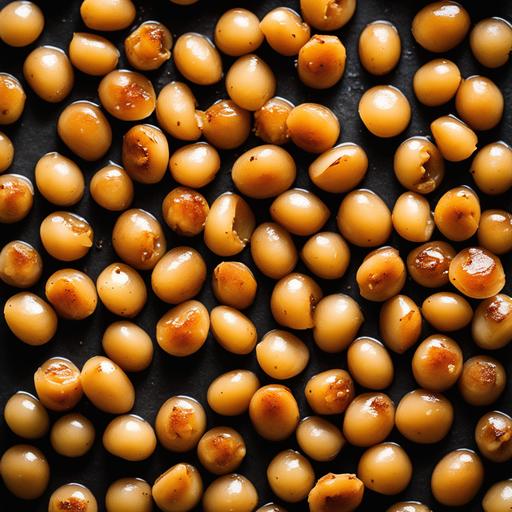
To ensure that your garbanzo beans turn out perfectly crunchy and delicious, take note of the following tips:
- Seasoning: While garbanzo beans have a satisfying natural flavor, seasoning them can elevate their taste to a whole new level. Experiment with various seasonings such as paprika, garlic powder, cumin, chili powder, or a sprinkle of sea salt.
- Oil: Although air frying requires less oil compared to deep frying, using a small amount can enhance the crispy texture. Drizzle a teaspoon of olive oil or your preferred cooking oil over the beans before air frying.
- Shaking: To achieve even crispiness, shake the air fryer basket halfway through the cooking process to ensure all sides of the beans receive equal heat distribution.
- Crowding: Avoid overcrowding the air fryer basket, as this can lead to uneven cooking. For perfectly crunchy garbanzo beans, place them in a single layer, allowing enough space for the hot air to circulate around each bean.
- Storage: Air-fried garbanzo beans are best consumed immediately for optimal texture and flavor. However, if you have leftovers, store them in an airtight container at room temperature for up to three days. Reheating them in the air fryer for a few minutes can help restore their crispiness.
Recipe: Crispy Air Fried Garbanzo Beans
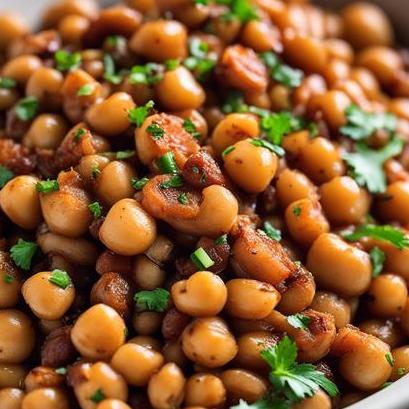
Ingredients:
- 2 cups dried garbanzo beans (chickpeas)
- 1 teaspoon olive oil
- 1 teaspoon paprika
- ½ teaspoon garlic powder
- ½ teaspoon cumin
- Salt, to taste
Instructions:
- Rinse the garbanzo beans under cold water to remove any dirt or impurities.
- Soak the garbanzo beans overnight in a large bowl of water. Drain and pat dry using paper towels.
- Preheat your air fryer to 400°F (200°C).
- In a mixing bowl, combine the dried garbanzo beans, olive oil, paprika, garlic powder, cumin, and salt. Mix well to ensure the beans are evenly coated with the seasoning.
- Place the seasoned garbanzo beans in a single layer inside the air fryer basket, ensuring they are not overcrowded.
- Air fry the beans at 400°F (200°C) for 20-25 minutes, shaking the basket halfway through to promote even cooking.
- Once the beans are golden brown and crispy, remove them from the air fryer and let them cool for a few minutes.
- Serve immediately as a delicious and healthy snack option.
Variations and Modifications
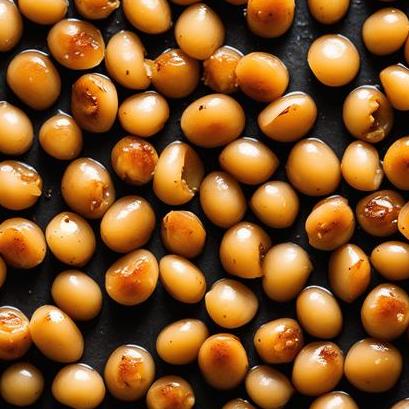
The beauty of air frying garbanzo beans lies in the endless possibilities for variations and modifications. Here are a few ideas to spark your creativity:
- Spicy Kick: If you enjoy spicy flavors, add a pinch of cayenne pepper or crushed red pepper flakes to the seasoning mix. Adjust the amount according to your desired level of heat.
- Herb Infusion: Experiment with dried herbs such as rosemary, thyme, or oregano to create a flavorful herb-infused garbanzo bean snack.
- Savory Umami: For a savory twist, sprinkle some nutritional yeast over the beans before air frying. Nutritional yeast adds a delightful cheesy, umami flavor.
- Sweet and Salty: If you prefer a sweet and salty combination, add a sprinkle of cinnamon and a touch of coconut sugar to the seasoning mix. This delightful blend will satisfy both your sweet and savory cravings.
Remember, the variations are endless, so don’t shy away from experimenting with different seasonings and spices to suit your taste preferences.
Doneness Checks
Determining the doneness of air fried garbanzo beans can be subjective, as the desired texture varies from person to person. However, there are a few indicators to look out for:
- Color: The garbanzo beans should turn golden brown and have a crispy exterior, indicating they are ready to be enjoyed.
- Texture: When you bite into a well-cooked garbanzo bean, it should have a satisfying crunchiness on the outside while maintaining a tender center. Adjust the cooking time based on your desired level of crispness.
Conclusion
Air frying garbanzo beans provides a wonderful opportunity to enjoy a healthy and delicious snack option. With its ease of preparation and versatility, this recipe allows you to unleash your culinary creativity by exploring various seasonings and modifications. From the science behind air frying to careful selection, cleaning, and preparation, you now have the knowledge to embark on your garbanzo beans air frying journey. So go ahead, try this recipe, and savor the delightfully crispy, flavorful, and nutritious garbanzo beans straight from your air fryer!
Sources
FAQS On Garbanzo Beans Air Fryer Recipe
What Are Garbanzo Beans?
Garbanzo beans, also known as chickpeas, are a legume that are commonly used in Mediterranean, Middle Eastern, and Indian cuisine.
What Is An Air Fryer?
An air fryer is a kitchen appliance that uses hot air to circulate and cook food, creating a crispy texture similar to fried food without the need for excess oil.
Are Garbanzo Beans Suitable For Air Frying?
Yes, garbanzo beans can be cooked in an air fryer to create a healthy and delicious snack or side dish.
What Are The Benefits Of Using An Air Fryer To Cook Garbanzo Beans?
Using an air fryer to cook garbanzo beans can be a healthier alternative to traditional frying methods, as it requires little to no oil. It also creates a crispy texture while maintaining the nutritional value of the beans.
How Do I Prepare Garbanzo Beans For Air Frying?
To prepare garbanzo beans for air frying, first drain and dry the beans. Then, toss them with desired seasonings and a small amount of oil (if desired) before placing them in the air fryer basket.
How Long Do I Air Fry Garbanzo Beans For?
Generally, garbanzo beans should be air fried at 380°F for 15-20 minutes, shaking the basket every 5-7 minutes to ensure even cooking.
What Are Some Ways To Serve Air Fried Garbanzo Beans?
Air fried garbanzo beans can be served as a snack on its own, tossed on top of a salad, or used as a crunchy addition to soups and stews. They can also be seasoned with sweet or savory flavors depending on personal preference.

